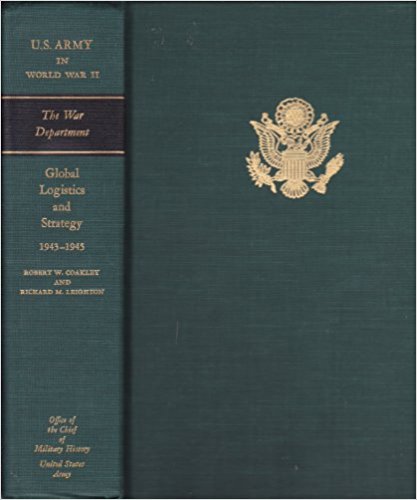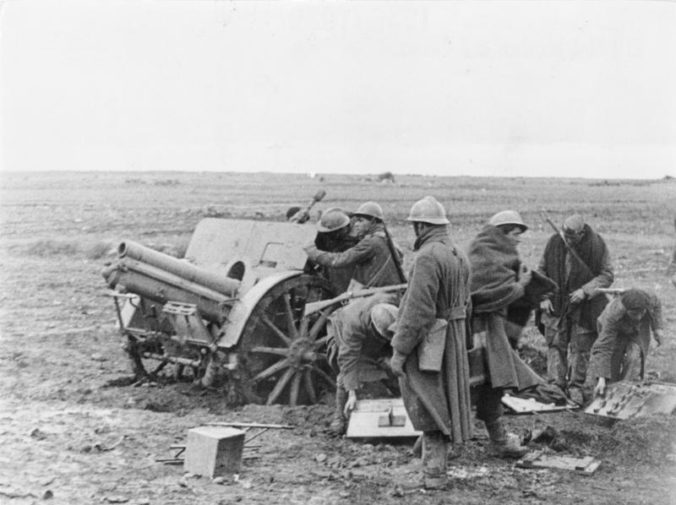Military history in 19th century Prussia used to be an exclusive club run for and by staff officers. Despised by their brethren who would rather be in the middle of an bombardment than caught reading a book, these “demigods” as they were derisively called, in turn looked down on academic historians as amateurs dabbling with things best left to professionals. The main task of the Kriegsgeschichtliche Abteilung (historical department) of the General Staff was to prepare future officers for war – intellectually, but also mentally. This called for brutal honesty, but maybe not too much of it, lest the spirit for war be stunted.
The resulting studies were oft biased, uncritical towards the officer corps, glossing over routs and setbacks. They exclusively focused on operations to the detriment of such mundane topics as logistics, supply, intelligence and economy, The price for this folly has since been paid (and mostly, mind you, not by the Germans), so we can now return to these works and value them for the qualities they also posess. The level of detail, familiarity with the topic on hand, the often clear and vivid description of events as well as the operational analysis make these books still an necessary read for anyone interested in the topics they cover.
Historical Works
Die Kriege Friedrichs des Großen
Hg. vom Großen Generalstab. Berlin 1890/1914
Erster Theil: Der Erste Schlesische Krieg 1740-1742
1. Band, „Die Besetzung Schlesiens und die Schlacht bei Mollwitz“
2. Band „Von Mollwitz bis zum Beginn des Mährischen Feldzuges“
3, Band Der Feldzug in Mähren und der Feldzug in Böhmen und Oberschlesien“,
Zweiter Theil: Der Zweite Schlesische Krieg 1744-1745
1. Band, „Böhmen 1744“,
2. Band, „Hohenfriedeberg“,
3. Band, „Soor und Kesselsdorf“,
Dritter Theil: Der Siebenjährige Krieg 1756-1763
1. Band, „Pirna und Lobositz“,
2. Band, „Prag“,
3. Band, „Kolin“,
4. Band, „Groß-Jägersdorf und Breslau“,
5. Band, „Hastenbeck und Roßbach“,
6. Band, „Leuthen“,
7. Band, „Olmütz und Crefeld“,
8. Band, „Zorndorf und Hochkirch“,
9. Band, „Bergen“,
10. Band, „Kunersdorf“,
11. Band, „Minden und Maxen“,
12. Band, „Landeshut und Liegnitz“,
13. Band, „Torgau“,
Geschichte des siebenjährigen Krieges in einer Reihe von Vorlesungen mit Benutzung authentischer Quellen. Großer Generalstab (Hg.), Berlin 1824/1841
1. Band: Der Feldzug von 1758, Berlin, – also online at archive.org
2. Band: Der Feldzug von 1758, Berlin, – also online at archive.org
3. Band: Der Feldzug von 1759, Berlin, 1828, – also online at archive.org
4. Band: Der Feldzug von 1760, Berlin, 1834, – also online at archive.org
5. Band: Der Feldzug von 1761,, Berlin, 1836 – also online at archive.org
6. Band: Der Feldzug von 1762 und der Schluss des Krieges 1763, Berlin, – also online at archive.org
Das preußische Heer der Befreiungskriege (3 Bd., Berlin 1914).
Band 1: Das preußische Heer im Jahre 1812, Ernst Siegfried Mittler und Sohn: Berlin, 1912
1806. Das preußische Offizierkorps und die Untersuchung der Kriegsereignisse. Großer Generalstab, Berlin 1906
Der Deutsch-dänische Krieg 1864 hrsg. vom Großen Generalstabe, Abteilung für Kriegsgeschichte
Vol 1. E. S. Mittler und Sohn, Berlin 1886, 515 pages – Political background, mobilisation and operations in Jutland until April 18th, 1864
Vol 2., E.S: Mittler und Sohn, Berlin, 1887, 566 pages – Operations in Jütland and Alsen up to the end of the war.
Vol 3, Kartenband, E.S: Mittler und Sohn, Berlin, 1887 – maps
Der Feldzug von 1866 in Deutschland redigiert von der Abteilung für Kriegsgeschichte des Großen Generalstabs, E.S. Mittler und Sohn, Berlin 1867
Der deutsch-Französische Krieg 1870-71
redigiert von der Abteilung für Kriegsgeschichte des Großen Generalstabs
Erster Theil: Geschichte des Krieges bis zum Sturz des Kaiserreiches
Erster Band: Vom Beginn der Feindseligkeiten bis zur Schlacht von Gravelotte, E. S. Mittler und Sohn, Berlin 1874
Zweiter Band: Von der Schlacht von Gravelotte bis zum Sturz des Kaiserreichs, E. S. Mittler und Sohn, Berlin 1875
Zweiter Theil: Geschichte des Krieges gegen die Republik
Erster Band: Von der Einschließung von Paris bis zur Wiederbesetzung von Orleans durch die Deutschen, E. S. Mittler und Sohn, Berlin, 1878
Zweiter Band: Die Ereignisse im Norden Frankreichs von Ende November, im Nordwesten Anfang Dezember und die Belagerung von Paris von Anfang Dezember bis zum Waffenstilstande. Die Operationen im Südosten von Anfang November bis Ende Januar, E. S. Mittler und Sohn, Berlin, 1880
Dritter Band: Die Ereignisse im Südosten Frankreichs von Mitte Januar bis zur Beendigung der Feindseligkeiten. Rückwärtige Verbindungen. Der Waffenstillstand. Rückmarsch und Okkupation. Rückblicke. E. S. Mittler und Sohn, Berlin 1881
—
Die Kämpfe der deutschen Truppen in Südwestafrika. Auf Grund amtlichen Materials bearbeitet von der Kriegsgeschichtlichen Abteilung I des Großen Generalstabes. 3 Bände
1. Band: Der Feldzug gegen die Hereros. (1.-3. Heft) 248 pages, 24 pictures and 27 maps, E. S. Mittler und Sohn, Berlin, 1906
2. Band: Der Hottentottenkrieg. (4.-6. Heft). 349 pages, 47 pictures and 28 maps, E. S. Mittler und Sohn, Berlin, 1907
And then there is “Der Weltkrieg 1914-1918”
General Military Studies
Kriegsgeschichtliche Einzelschriften. In 6 Bänden, Großer Generalstab-Kriegsgeschichtliche Abteilung (ed); E.S. Mittler & Sohn, 1908
Erster Band (Heft 1.-6.), E.S. Mittler und Sohn Berlin 1887
Zweiter Band (Heft 7-12), E.S. Mittler und Sohn Berlin 1889
Dritter Band (Heft 13-18), E.S. Mittler und Sohn Berlin 1895
Vierter Band (Heft 19-24), E.S. Mittler und Sohn Berlin 1898
Fünfter Band (Heft 25-30), , E.S. Mittler und Sohn Berlin 1902
Sechster Band (Heft 31-36), E.S. Mittler und Sohn Berlin 1905
Studien zur Kriegsgeschichte und Taktik
Volume 1: Heeresbewegungen im Kriege 1870-71, E. S. Mittler und Sohn, Berlin
Volume 2: Das Abbrechen von Gefechten, E. S. Mittler und Sohn, Berlin 1903. 25. Maps
Volume 3: Der Schlachtenerfolg, mit welchen Mitteln wurde er erstrebt?, Ernst Siegfried Mittler und Sohn: Berlin, 1903
Volume 4: Die Festung in den Kriegen Napoleons und der Neuzeit. E. S. Mittler und Sohn, Berlin
Volume 5: Der 18. August 1870, E.S. Mittler und Sohn Berlin 1906
Urkundliche Beiträge und Forschungen zur Geschichte des Preussischen Heeres
Erstes Heft: Die Anfänge der alten Armee, E. S. Mittler und Sohn, Berlin, 1901
Zweites Heft:
Drittes Heft:
Viertes Heft:
Fünftes Heft: Erinnerungen aus dem Leben des Friedrich Karl v. Schmidt. E.S. Mittler & Sohn, 1909
Sechstes Heft: Der Preussische Kavalleriedienst vor 1806. E. S. Mittler und Sohn, Berlin, 1904
Collected Editions
Moltkes militärische Werke, Herausgegeben vom Großen Generalstabe, Abtheilung für Kriegsgeschichte, Berlin, E. S. Mittler, 1892-1906
I: Militärische Korrespondenz, Berlin, E.S.Mittler, 1892-1895
Erster Teil: Moltkes militärische Korrespondenz: Krieg 1864
Zweiter Teil: Aus den Dienstschriften des Krieges 1866.
Dritter Teil: Aus den Dienstschriften des Krieges 1870/71: Der Krieg bis zur Schlacht von Sedan; Vom 3. September 1870 bis zum 27. Januar 1871; Waffenstillstand und Friede.
Vierter Teil: Aus den Dienstschriften des Jahres 1859.
II. Die Thätigkeit als Chef des Generalstabes der Armee im Frieden, Berlin, E.S.Mittler, 1895-1906
Erster Teil: Moltkes taktische Aufgaben aus den Jahren 1858-1882
Zweiter Teil, Vol 1: Moltkes taktisch-strategische Aufsätze aus den Jahren 1857-1871
Zweiter Teil, Vol 2: Maps and Appendices
Dritter Teil: Moltkes Generalstabsreisen aus den Jahren 1858 bis 1869. 401 pages with 22 maps, Berlin 1906
III. Moltkes kriegsgeschichtliche Arbeiten, Berlin, E.S.Mittler, 1899-1902
Erster Teil: Geschichte des Krieges gegen Dänemark 1848/49.
Zweiter Teil: Kritische Aufsätze zur Geschichte der Feldzüge von 1809, 1859, 1864, 1866, und 1870/71.
Dritter Teil: Der italienische Feldzug des Jahres 1859
IV “Kriegslehre”, Berlin, E.S.Mittler, 1910-1912
Erster Teil: Die operativen Vorbereitungen zur Schlacht.
Zweiter Teil: Die taktischen Vorbereitungen zur Schlacht
Dritter Teil: Die Schlacht



